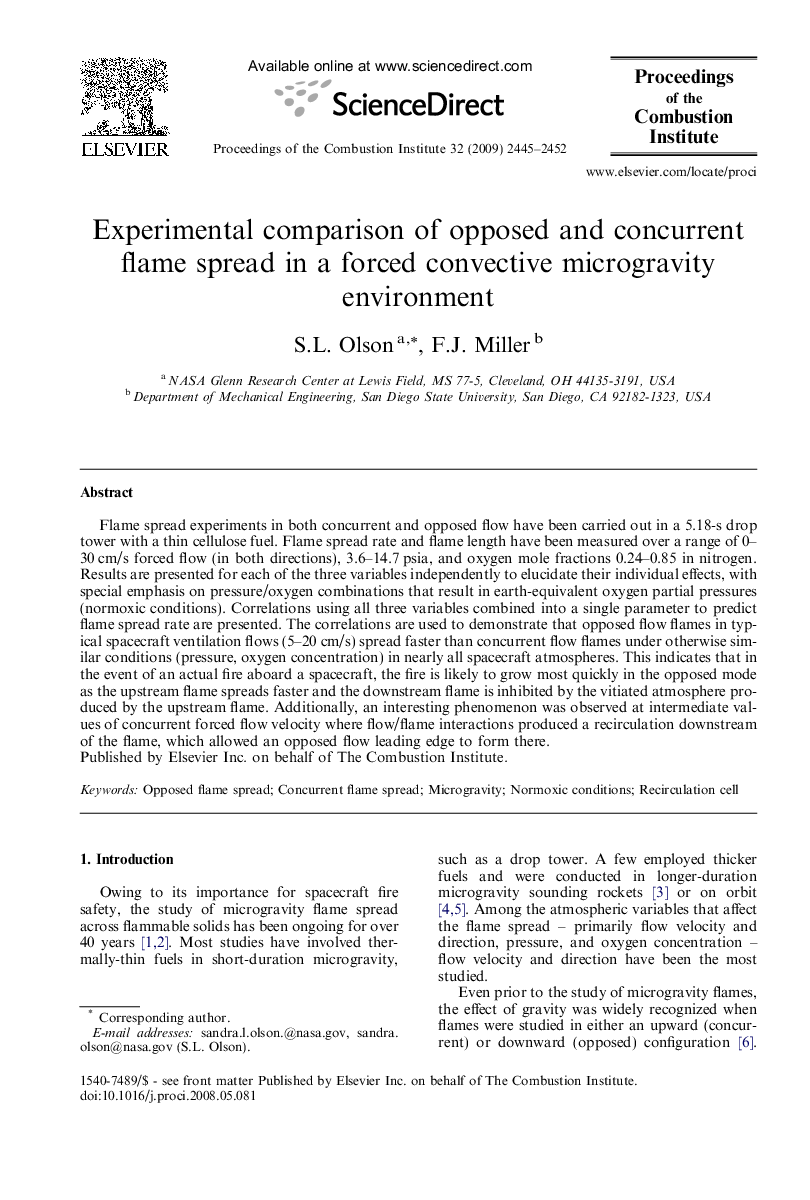| Article ID | Journal | Published Year | Pages | File Type |
|---|---|---|---|---|
| 241105 | Proceedings of the Combustion Institute | 2009 | 8 Pages |
Flame spread experiments in both concurrent and opposed flow have been carried out in a 5.18-s drop tower with a thin cellulose fuel. Flame spread rate and flame length have been measured over a range of 0–30 cm/s forced flow (in both directions), 3.6–14.7 psia, and oxygen mole fractions 0.24–0.85 in nitrogen. Results are presented for each of the three variables independently to elucidate their individual effects, with special emphasis on pressure/oxygen combinations that result in earth-equivalent oxygen partial pressures (normoxic conditions). Correlations using all three variables combined into a single parameter to predict flame spread rate are presented. The correlations are used to demonstrate that opposed flow flames in typical spacecraft ventilation flows (5–20 cm/s) spread faster than concurrent flow flames under otherwise similar conditions (pressure, oxygen concentration) in nearly all spacecraft atmospheres. This indicates that in the event of an actual fire aboard a spacecraft, the fire is likely to grow most quickly in the opposed mode as the upstream flame spreads faster and the downstream flame is inhibited by the vitiated atmosphere produced by the upstream flame. Additionally, an interesting phenomenon was observed at intermediate values of concurrent forced flow velocity where flow/flame interactions produced a recirculation downstream of the flame, which allowed an opposed flow leading edge to form there.
